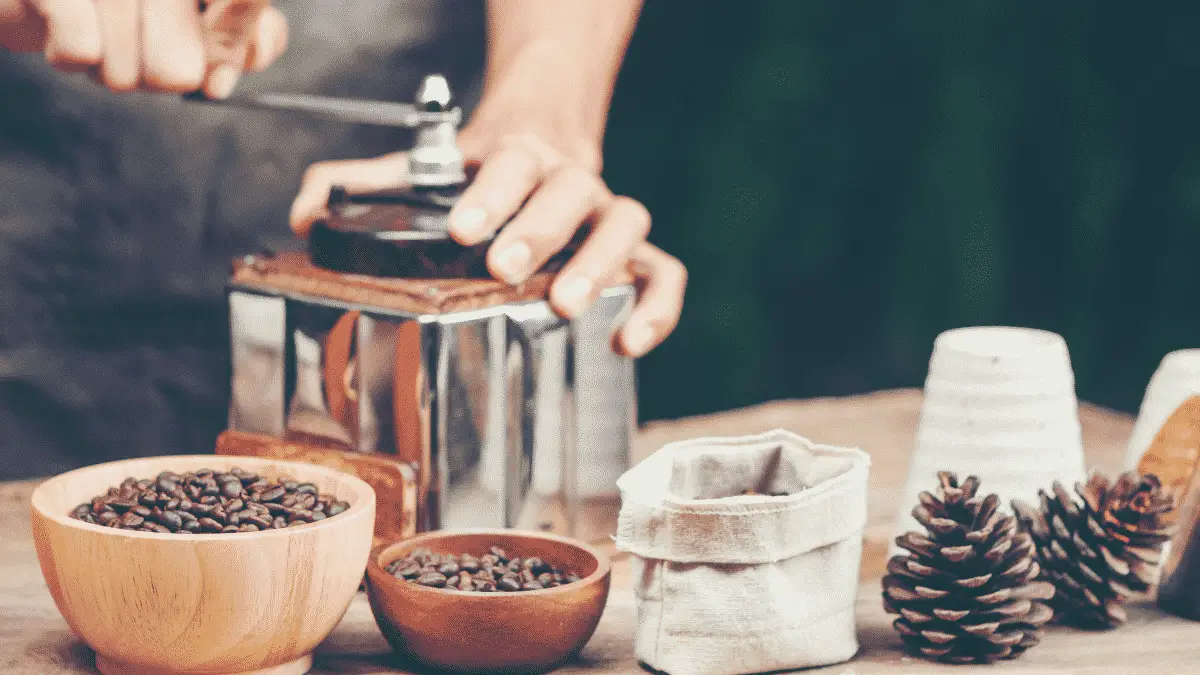Are you struggling to find the best way to make cold brew coffee? Look no further! Here you will find everything you need to know for a great cup of cold-brewed coffee (and more!).
Definition of grind size and terminology
I really love coffee, of all types, whether espresso, filter, or cold brew coffee. For many years, I used to make a cup of coffee every morning at home. While it gave me a jump start to begin my day, I always needed a second cup soon after! While my homemade coffee aromas lifted me from my ‘coma’, it did not always taste as nice as it smelled. The coffee grounds that I bought in my local supermarket always tasted bitter, bland, or acidic. I kept this routine for many years until I finally decided to learn and understand why my coffee never tasted as advertised. What I found out amazed me.
One of the most important things you need to know about making coffee is the coffee grounds’ size, otherwise called grind size. Depending on the grind size can help the process in merging the water and coffee, and result in the perfect concoction.
The smaller the grind size is commonly referred to as fine, and the bigger the grind size refers to as coarse. Each grind size is used for different coffee types, so choosing the right grind size is crucial.
Why is grind size important for cold brew coffee?
In recent years, cold brew coffee has become part of everyday life, and many people attest to it being the best coffee choice. Though brewing coffee does not change (in which water and coffee are mixed together), the bean grind size can significantly affect the outcome. This is particularly important for cold brew coffee. This is because cold-brewed coffee needs more time in contact with the water. So the bigger the grind size, the longer time is required to mix and cool down!
What are the different grind sizes and for which technique are they used?
One of the most important aspects I learnt about making coffee is to know in advance what kind of coffee you are going to make. This will determine what kind of grind size you need to make. Do you want an Espresso, pour-over coffee, drip coffee, French Press or would you prefer a cold brew? With so many options to decide, it can be daunting but here are some general rules.
Fine
If you are going to make an Espresso, it’s best to use fine ground coffee for a short time and with hot water. Alternatively, if you plan to make a Turkish Coffee, you will need to make an ultra-fine grind size.
Medium
If you plan to make a pour-over or drip coffee, your best result would be with medium grind sizes. Having said that, as the pour-over and drip coffee are manual processes, some experimentation is involved. If you plan to make a single cup, it might be wise to try a finer grind size. This is because you will be using less water and so brewing time will be shorter.
Coarse Grind
A coarse grind is best used to make cold brew coffee. This is because the coffee grounds and water mixture need to immerse in water for longer periods of at least 18 to 24 hours. As a result, coarse grind beans allow the extraction of the various flavors to emerge gradually. On the other hand, if finely grounded beans were used, too many aromas would be extracted, resulting in a bitter taste.
Coarse grind beans can also be used to make French Press, however, at medium level. This is mostly to avoid small pieces seep through the press.
Though this above guideline can get you started making your coffee, it might be wise to understand your grinder settings. Every grinder is slightly different, so you might need to adjust accordingly.
What is the perfect grind size for cold brew coffee?
While cold brew coffee requires coarse grind size, the question remains, how coarse is coarse? An important aspect that should be considered is how each grinder works. Would you prefer a blade grinder, a burr grinder, an electric grinder, or would you prefer a manual device? These different methods can greatly change the way you grind your coffee beans, and in turn, your coffee! So what is the difference? Blade grinders are essentially a small container that holds a blade inside and spins when propelled. Once the coffee is placed in the machine and plugged in, the blades’ cut’, or grind the coffee beans. The longer the blade spins, the finer the grounds.
The second option that can be considered is the burr grinder. Unlike blade grinders, this method consists of a wheel of many edges that crush the beans while the machine is turned on. Depending on the settings of each burr determines the coarseness or fineness of the coffee beans.
The third type of grinder is electric grinder. This machine is considered to be the most convenient. All you need to do is to choose your settings and press the switch. However, it should be noted that each brand has different gradient levels from 12 to 40. The Baratza Encore grinder ranges from 31 to 40 settings, while Baratza Vario setting ranges from 8 to 10 settings. You may need to explore the various companies before deciding on a machine.
The last type of grind method is manual grinding. This works by manually rotating a lever that crushes the grounds. One of the most attractive aspects of a manual grinder is the ability to use it anywhere. No plugin is necessary.
Every method mentioned above has different benefits and drawbacks depending on your daily needs as a coffee maker. If you prefer to be more in control of the process, it may be best to choose a blade grinder or a manual grinder. Alternatively, if time is of the essence, burr grinders or electric grinders is your best choice. It is less time consuming and allows you to attend other matters.
Grind size can tell you the time you need to brew it
The time you need to brew your coffee is your grind grinding degree. We already know that coffee beans can be ground from fine to coarse. However, we still need to know how long we need to brew our coffee. Well, it really depends on how many fragrances you want to emerge. The list of flavors that arise when your coffee is brewing is countless. However, that doesn’t mean that the more flavors that arrive will result in the greatest aromas. There are limits.
Suppose you are still learning your coffee preferences. In that case, it may be wise to follow the general rules laid out by the different coffee machines. After all, they know best. Finer grind sizes should equal a shorter brew time. This would be equivalent to an Espresso. Coarser grind sizes equal to a longer time. This would be equivalent to our cold brew coffee.
What is over and under extraction?
As mentioned above, there are limits to the number of aromas that should be extracted while brewing your coffee. These are called over and under extractions. Over extraction occurs when too many flavors are released and can result in a sour and acidic taste. A prime example of over-extraction would be if fine grind sized beans were used to make cold brew coffee. We have discovered that cold brew coffee needs a longer time to brew, and finer grounds produce many unwanted tastes.
Under extraction occurs when very scarce aromas are released and happen during the brewing process. Unlike errors of too fine grind sizes, under extraction occurs when coarse grind sizes have limited brewing time to release the aroma. When this happens, the coffee may taste bland and diluted.
Final tips of grind size coffee beans.
Though grind size beans are the cornerstone to your coffee making adventures, there are a few more suggestions that might help. In general fresher coffee tastes better. Like much fresh produce like bread, they can get stale. So before you buy your coffee beans, it is always best to check when they were roasted. In general, it is best to consume them 30 days after being roasted.
Once you have bought your coffee beans, you need to store it safely. One of the best ways to preserve your coffee is to keep them in an air-tighter at room temperature.
Lastly, it is best to avoid pre-ground coffee beans. It may be tempting. However, oxidation and decay occur quickly. As a result, coffee beans often taste moldy. Many coffee drinkers have also complained that the pre-ground coffee does not combine with the machine they have.

